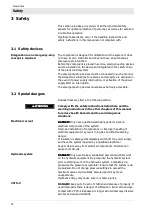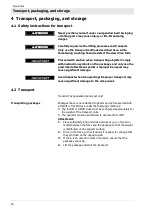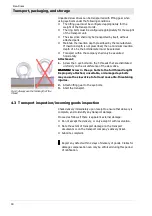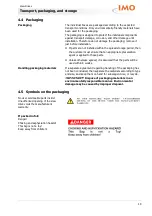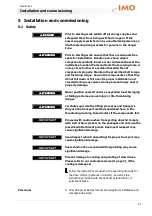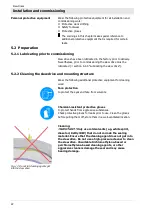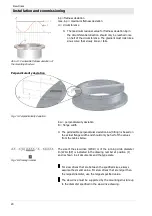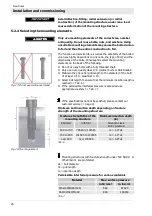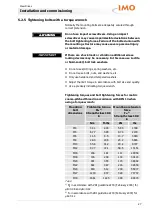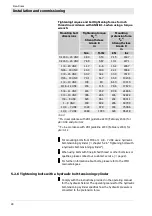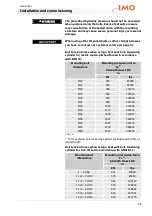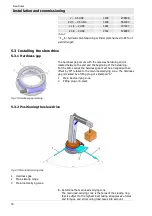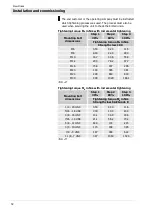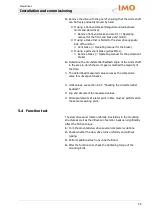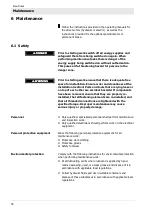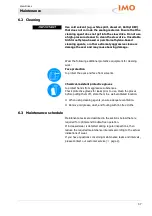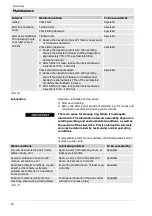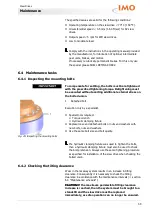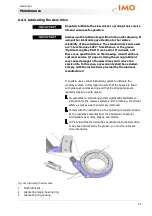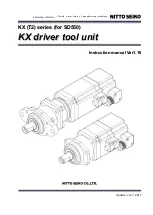
Slew Drives
Installation and commissioning
26
IMPORTANT
Axial deflection, tilting, radial extension (or radial
contraction) of the mounting structure under max. load
causes deformation of the mounting structure.
5.2.4
Selecting the mounting elements
CAUTION
CAUTION
CAUTION
CAUTION
Only use mounting elements of the correct size, number
and quality. Do not reuse bolts, nuts, and washers. Using
unsuitable mounting elements may cause the bolted union
to fail and thus the entire construction to fail.
Fig. 17: Do not use continuous thread
The function and service life, as well as the durability of the bolted
union are highly dependent on grip ratio, the type of bolt, and the
dimensions of the bolts. Consequently select the mounting
elements on the basis of the following:
Do not use any bolts with a fully threaded shaft.
Only use new, quality class 10.9 (metric) bolts or SAE Grade 8.
Maintain the grip ratio (grip length to the diameter of the bolt)
of at least ≥ 5 to maximum ≤ 10.
Select bolt length to ensure that the minimum insertion depth is
reached (
Tab. 6).
If the permissible interfacial pressure is exceeded use
appropriate washers (
Tab. 7).
Fig. 18: Mounting element
If the specifications cannot be satisfied, please contact our
customer service (
page 2).
Minimum bolt insertion depth depending on fracture
strength of the mounting structure
Fracture strength Rm of the
mounting structure
Minimum insertion depth
(le)
in N/mm²
in lbf/in²
Strength class
10.9 / Grade 8
500 to 700
72520 to 101525
le = 1.4*ds
700 to 900
101525 to 130535
le = 1.1*ds
over 900
over 130535
le = 0.9*ds
Tab. 6
Mounting structures with fracture strength under 500 N/mm² or
72520 lbs/in² are prohibited.
ds = bolt diameter
lk = grip length
le = insertion depth
Permissible interfacial pressure for various materials
Material
Max. surface pressure
in N/mm²
in lbs/in²
St52/C45N/46Cr2N
600
87023
46Cr4V/42CrMo4V
800
116030
Tab. 7

